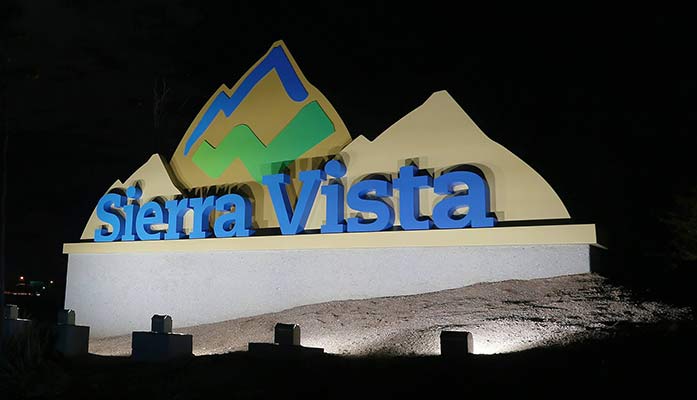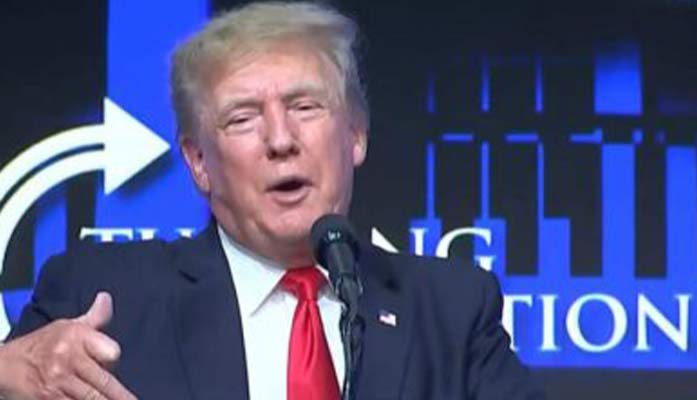
by Terri Jo Neff | Jul 26, 2021 | News
By Terri Jo Neff |
It is an example of typical government-speak: “The Office of Management and Budget today announced the 2020 Standards for Delineating Core Based Statistical Areas.”
But the OMB’s July 13 announcement was something several Arizona cities were anxiously awaiting, because the 2020 Standards could have disqualified them from qualify as a Metropolitan Statistical Area (MSA). And that would have meant losing their advantage over other towns and cities when applying for federal funding for healthcare, housing, infrastructure, and transportation projects.
Since 2010, at least 50,000 residents must live in the core city to obtain federal recognition a Metropolitan Statistical Area (MSA), even if it is more of a mini-metro area. In Arizona, there are seven designated MSAs: Flagstaff, Lake Havasu City-Kingman, Phoenix-Mesa-Chandler, Prescott, Sierra Vista-Douglas, Tucson, and Yuma.
However, every 10 years the OMB recommends changes to its standards, and earlier this year a federal interagency committee suggested a major change for the 2020 Standards – doubling a MSA’s minimum core city population to 100,000. That would have resulted in Flagstaff, Lake Havasu City-Kingman, Prescott, and Sierra Vista-Douglas losing their MSA status.
And along with the loss of the MSA designation would have been one of those cities’ key qualifier for federally funded Community Development Block Grants and USDA Rural Development Grants. Flagstaff receives nearly $600,000 a year just in CDB grants, while Prescott and Sierra Vista have been the recipients of more than $200,000 in annual CDB grants.
The Metropolitan and Micropolitan Statistical Area Standards Review Committee received letters of opposition from the cities of Flagstaff and Prescott among more than 700 other public comments about the significant change in MSA criteria. In the end, the committee submitted a revised recommendation to stick with the 50,000 population threshold.
Mignonne Hollis says the MSA designation ensures communities like Flagstaff and Sierra Vista-Douglas can advocate for their needs by giving them a seat “at many tables.”
Hollis serves as executive director of the Sierra Vista-based Arizona Regional Economic Development Foundation and of the Aerospace Arizona Association, is past president of the Arizona Association for Economic Development, and is a member of the International Association for Economic Development.
She was one of the first in Cochise County to sound the alarm on the devastating affect a 100,000 core population prerequisite would have had on the Sierra Vista – Douglas.
“This funding is vital to bring investment in our local communities and spur on economic development,” Hollis said of the opportunities available to a MSA. “In addition to funding decisions at the federal level, the loss of a MSA designation could also negatively impact a community’s ability to attract and retain businesses and top-talent employees.”
While good news for Arizona communities this year, the OMB’s July 13 announcement provided a heads-up that a MSA threshold change will likely be incorporated in 2030.
“Recognizing the committee’s concern that MSA thresholds have not kept pace with population growth, OMB will work with the Standards Review Committee to conduct research and stakeholder outreach to inform the 2030 standards update,” the announcement said.
There has also been bi-partisan federal legislation introduced by Arizona Sen. Mark Kelly, a Democrat, and South Dakota Sen. John Thune, a Republican, to look into how MSA core city population thresholds are determined in the future.

by B. Hamilton | Jul 25, 2021 | News
By B. Hamilton |
Thousands of people came from across the state to hear from President Donald Trump on Saturday. The former president delivered a fiery speech at the Turning Point Action conference in Phoenix.
During the rally dedicated to election integrity, Trump introduced many members of the Arizona State Senate and thanked them for agreeing to pursue an audit of the Maricopa County 2020 General Election.
“We will fight for truth, transparency and accountability, and we will not stop until we have restored out American birthright of honest, free and fair elections,” said Trump. “We’re gathered here in Phoenix to show our support for election integrity and for the brave and unyielding conservative warriors in the Arizona state Senate.”
“Why wouldn’t somebody want election integrity? Why wouldn’t they want to know? And I would be very happy – won’t happen – but I would be very happy if they did it and everything was perfect. But you’re not going to find that,” said the former president.
Trump got around to the subject of the Democrats, who he said are moving the country in a socialist direction through their spending, support for Critical Race Theory, and “Marxists” like Black Lives Matter who “are seizing power and destroying everything we hold dear as Americans. It’s happening, and I said it was going to happen.”
“They dismantled the rule of law, censor speech, take over the free press, imprison political opponents,” said Trump pivoting back to the 2020 election. “You see that’s happening all over; look at what I’ve been through for years – and, of course, hold fake phony elections.”

by Terri Jo Neff | Jul 25, 2021 | News
By Terri Jo Neff |
The announcement last week by officials of Ben & Jerry’s that the ice cream company would stop selling its products in the Israeli-controlled West Bank at the end of 2022 prompted Gov. Doug Ducey to call the move “discrimination.”
Ducey added that “Arizona stands with Israel” and said the state “will not do business with a company that boycotts Israel.” He also reminded Arizonans that as governor has twice signed legislation in an attempt to make sure the State does not contract with entities engaging in boycotts of Israel. It is unclear how much money was spent annually by state agencies on Ben & Jerry’s products before and after the legislation.
The decision by Unilever-owned Ben & Jerry’s came after pro-Palestinian activists worked to garner support within the United States for Boycott, Divestment, Sanctions (BDS) efforts involving companies which do business in Israeli or in West Bank communities which Palestinians claim a right to.
The Anti-Defamation League calls BDS efforts anti-Semitic, anti-Israel, and bigoted.
Ben & Jerry’s has not announced any plans to step selling its products in any other areas of Israel, although a factory in southern Israel is reportedly slated for closure despite not being near occupied or disputed territory.
Both Israeli Prime Minister Naftali Bennett and Foreign Minister Yair Lapid criticized the decision by Ben & Jerry’s. And in New York, the board of directors of a grocery chain recently voted to cut off all promotional activities involving Ben & Jerry’s products.
Avi Kaner, co-owner of Morton Williams Supermarkets, said the objective of “extremists” within Ben & Jerry’s “is very, very selective boycotts specifically against the Jewish people,” particularly those who live in Jewish communities within disputed territories.
“Who is Ben & Jerry’s to say that little Jewish girls cannot have ice cream in the Jewish quarter of Jerusalem?” Kaner said.
Earlier this year several students at Arizona State University (ASU) sought to pass a resolution in support of BDS efforts. The president of the ASU Undergraduate Student Government declined to put the matter on a meeting agenda.

by Terri Jo Neff | Jul 24, 2021 | News
By Terri Jo Neff |
Gov. Doug Ducey wants to remind the more than 50,000 military veterans living in Arizona that he signed legislation which now fully exempts military pensions from state income taxes.
“Veterans put the safety of our great nation first. We should honor their service, not tax it,” Ducey tweeted this week.
Arizona’s tax code previously exempted only $3,500 of a veteran’s military pension. Getting it to a full exemption was something Ducey announced as a priority during his January 2020 State of the State speech, but then the COVID-19 pandemic shut down all but priority budget considerations.
When the new legislative session convened in January 2021, the governor once again made tax relief for veterans a priority. It took until the last week of June, but the full exemption passed and Ducey signed the legislation.
“Our nation’s greatest heroes will no longer pay taxes on their retirement pay. This saves the average veteran an additional $650 a year,” Ducey said after signing the bill.
In addition to the pension income tax exemption, the Fiscal Year 2022 budget package signed by the governor includes $25 million for construction and operation of a State Veterans Home in northwestern Arizona. Additional funds were appropriated for operating State Veterans Homes recently opened in Flagstaff and Yuma.
Nearly $775,000 was appropriated to ADVS for the hiring of 12 additional Veteran Benefits Counselors, and the budget includes $100,000 earmarked for distribution to a charitable organization located in southern Arizona to work with regional Veterans organizations to improve services which can reduce Veteran suicides.
Ducey also signed SB1802 which establishes the date every August when Arizonans will recognize National Navajo Code Talkers Day.
Among those getting the word out to veterans is Col. Wanda Wright, director of the Arizona Department of Veterans’ Services (ADVS).
“This budget is a real win for Arizona Veterans,” Wright posted to the ADVS website. “It further proves that here in Arizona, we honor and support service members, Veterans and their families.”

by Corinne Murdock | Jul 24, 2021 | News
By Corinne Murdock |
Scottsdale Unified School District (SUSD) announced it will require masks on buses – a direct violation of state law prohibiting school-enforced mask mandates. SUSD claimed that CDC authority was greater than the state’s authority. They cited the CDC order requiring masks on public transportation. SUSD claimed that this order not only applied to public school transportation – but private schools as well.
“There was a specific question regarding whether [the CDC order] applied to school buses […] the CDC confirmed that the order applies to school buses, whether they are operated by the district or by a private provider,” wrote SUSD. “SUSD will be complying with this federal requirement. Students who choose to ride the bus, along with SUSD bus drivers, will be required to wear masks while on the bus. Students are not required to wear masks while waiting at a bus stop or after they disembark, and drivers are not required to wear masks if not students are on the bus.”
SUSD parent Amanda Wray tweeted a screenshot of SUSD’s district-wide email announcing the mask mandate on Friday.
“It’s official, masks required on buses! @ScottsdaleUSD sat on this announcement as long as they could. Operated summer school and camp buses without masks, so what changed?” asked Wray.

https://twitter.com/AmandaWray/status/1418735083767300101
Earlier this month, the Arizona legislature banned mask mandates within its K-12 budget. The legislation prohibited schools from requiring masks during school hours or on any school property. The move followed the governor’s decision in April to rescind the order mandating masks in schools.
On the same day of SUSD’s announcement, Ducey doubled down on the assertion that there wouldn’t be any mask mandates in schools. In his pleadings with Arizonans to get vaccinated, he stated that the vaccines made mandates unnecessary.
“We will not be listening to the lockdown lobby. Businesses will stay open. Students will be able to attend school. There will be no mask mandates,” said Ducey. “We have a proven solution with the vaccine. I strongly encourage every Arizonan who is eligible for the vaccine to get it so they can protect themselves and our whole state.”

https://twitter.com/dougducey/status/1418617995824222210
Ducey didn’t respond to news of SUSD’s mask mandate.
At least one other lawmaker took notice. State Senator Michelle Ugenti-Rita (R-Scottsdale) responded to parents concerned over SUSD’s decision to break state law with a mask mandate. Ugenti-Rita accused SUSD of siding with the Biden Administration and socialism by imposing an unauthorized mask mandate.
“Why is @ScottsdaleUSD insistent on pushing the socialist agenda of the @JoeBiden administration…” wrote Ugenti-Rita. “If there ever was a better argument for school choice the Democrats are making it now! #LeaveOurKidsAlone[.]”

https://twitter.com/MichelleUgenti/status/1418748330964779012
This latest announcement comes on the heels of another controversial act undertaken by SUSD. As AZ Free News reported on Thursday, SUSD offered to send students an emotional health and wellness screening that asked for personal information, medical history or information, mental health history or information, quality of home and interpersonal relationship information, student biometric information, gun or ammunition ownership, and any relatives’ illegal, antisocial, or self-incriminating behaviors.
Students as young as kindergarteners were eligible to participate in this screening. Concerned parents asked SUSD about the screening description. SUSD officials responded that the description was part of a standard waiver form that wasn’t tailored for SUSD use, and that the screener wouldn’t acquire any of the information listed on the description.
Corinne Murdock is a contributing reporter for AZ Free News. In her free time, she works on her books and podcasts. Follow her on Twitter, @CorinneMurdock or email tips to corinnejournalist@gmail.com.

by Terri Jo Neff | Jul 23, 2021 | News
By Terri Jo Neff |
A lawsuit filed in Maricopa County Superior Court on Wednesday argues that efforts to have voters decide whether Arizona’s new flat-rate income tax and other tax law changes should go into effect are unconstitutional.
The Arizona Free Enterprise Club (AFEC) is among the plaintiffs seeking a court order to bar the acceptance of petition signatures gathered by Invest In Arizona, a political committee sponsored by Arizona Education Association and Stand for Children – Arizona, which wants voters to overturn three revenue-related bills recently signed by Gov. Doug Ducey.
The problem with Invest in Arizona’s plan, the lawsuit argues, is that Article 4 of the Arizona Constitution prohibits referendums of legislation which deals with revenues and appropriations used for the “support and maintenance of the departments of state government and state institutions.”
AFEC is a nonprofit 501(c)(4) corporation organized and operated for the promotion of social welfare. It does so by engaging in public education and advocacy in support of free markets and economic growth in the State of Arizona.
Joining AFEC as plaintiffs in the lawsuit is the group’s executive director, Scott Mussi, as well as Diane Schafer, a registered voter from Yavapai County.
The legislation which Invest in Arizona wants to challenge via referendum are Senate Bills 1783, 1827, and 1828. The bills were passed near the end of the recent legislative session and then signed by Gov. Doug Ducey.
SB1828 amends Arizona’s current income tax brackets and tax rates and provides for a single income tax rate of 2.5 percent conditioned on certain general fund revenue thresholds. It was the cornerstone of Ducey’s budget package approved by the legislature earlier this month.
A companion bill, SB1827, ensures an individual taxpayer’s taxable income will not be subject to an overall marginal tax rate of more than 4.5 percent when a tax surcharge from Prop 208 (Invest In Ed) is considered. Meanwhile, SB1783 allows certain small business owners to pay an alternative small business tax.
The legislation is slated to take effect 90 days after the governor affixed his signature. That 90-day window provides time for challengers to initiate a petition signing drive to take the matter out of lawmakers’ hands and put it before voters across the state via a referendum.
Getting a matter onto a ballot as a referendum requires valid petition signatures to be submitted to Arizona Secretary of State Katie Hobbs equal to five percent of the total votes cast in the last gubernatorial election. If that happens, then the new laws would remain on hold until voters have their say in a statewide election.
And that, according to AFEC, Mussi, and Schafer, should not be allowed to happen with SB1783, 1827, and 1828 because each deals directly with the generation of state revenue for funding Arizona’s state government and state institutions. Their lawsuit asks a Maricopa County judge to bar Hobbs from accepting petition signatures for any of the three bills.
“The filing of petitions in support of the Proposed Referenda will injure the Plaintiffs and all Arizona taxpayers by unconstitutionally delaying the effective date of non- referrable laws duly enacted by the elected Legislature and approved by the Governor,” the lawsuit states.
The plaintiffs are represented by Thomas Basile of the Statecraft Law Firm. Basile says his clients are not against voter referendums in general and only initiated this legal action to ensure the Arizona Constitution is followed by Hobbs’ office.
“At the core of our case is that while the right of referendum is broad, it is not unlimited,” he told AZ Free News on Thursday. “The framers of our Constitution carved out certain categories exempt to referendum, such as in the case of tax reform and appropriations.”
Hobbs is named as a defendant in her official capacity as the state officer responsible for accepting or rejecting referendum petition sheets. Invest in Arizona is also named as a real party in interest.









